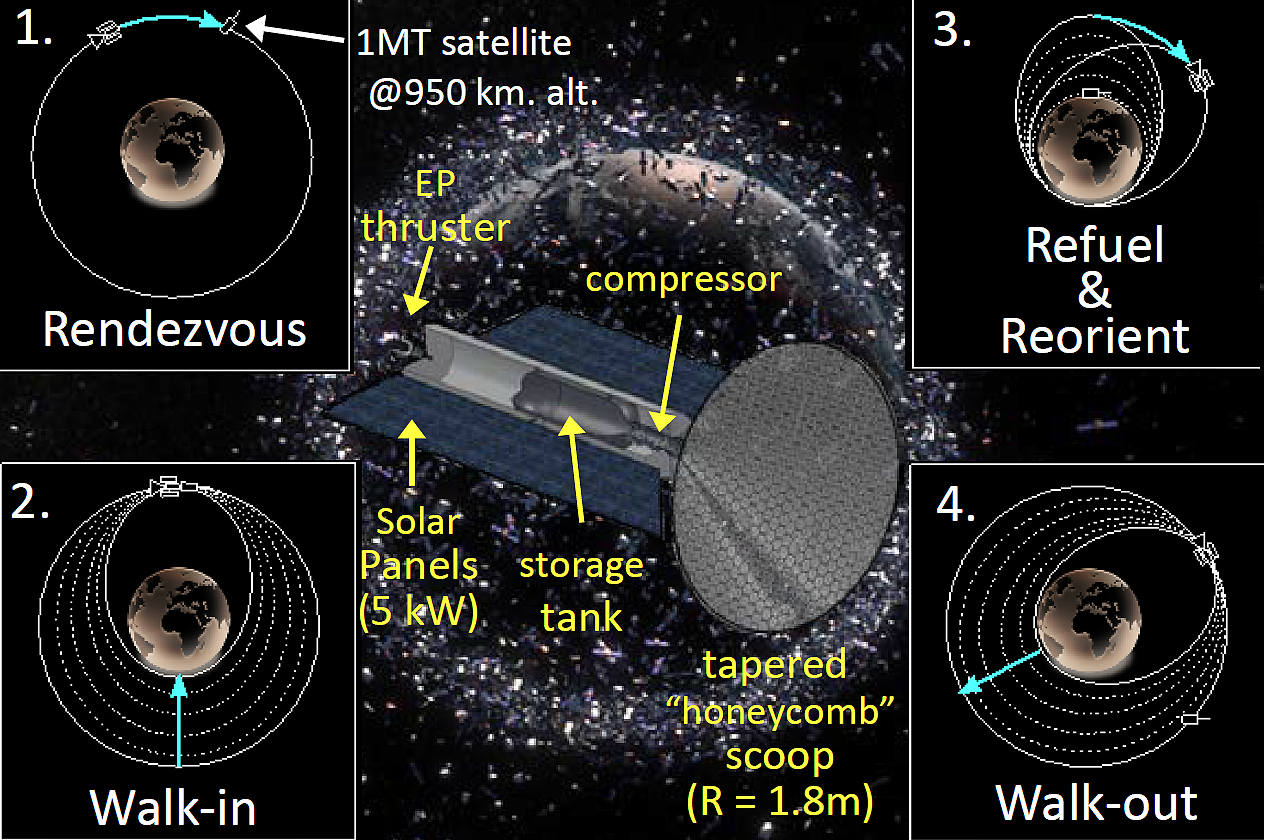John Slough
MSNW LLC
As of January 2018 an estimated 8,100 tons of space debris has accumulated in low Earth orbit consisting of spent rocket bodies, mission-related debris, and collision fragments. The vast majority of these objects are too small to detect with radar systems, but there are over 29,000 known objects larger than 10 cm. Impacts between these objects and operating missions have damaged costly equipment, required expensive collision avoidance maneuvers, and endangered the lives of astronauts on the international space station. In 1979 the NASA Orbital Debris Program Office, in conjunction with Donald J. Kessler, released research on the “Kessler Syndrome” which predicted that collisions would continue to increase. This would lead to an exponential growth in debris that would render access to space impossible within several generations. A partial solution to stabilizing the debris population was also proposed which required new missions to incorporate post mission disposal measures, as well as missions dedicated to Active Debris Removal (ADR) by placing the largest objects into decaying orbits of less than 25 years. This proposal addresses how one might succeed in achieving this latter objective.
Successful realization of the CHARON concept would have a major impact on several NASA mission objectives. An orbital vehicle that could utilize in-situ upper atmospheric resources would enable a host of missions, and in particular ADR, that require extremely high delta-V in a fast, responsive, and repeatable manner. The concept proposed here, the Crosscutting, High Apogee, Refueling Orbital Navigator (CHARON) will provide such capability. CHARON accomplishes this in the following manner: first it obtains fuel by scooping up and storing the low density N2 and O encountered during the low altitude perigee periods of the highly elliptical orbits. Incorporation of the ultra-lightweight, high thrust-to-power Electrodeless Lorentz Force thruster developed at MSNW enables CHARON to operate efficiently on stored gas in a variety of configurations depending upon mission requirements. As CHARON can thrust at apogee, it can achieve the extensive orbit lowering needed for ADR. Additionally, CHARON can thrust at perigee to provide drag compensation for very low perigee refueling, stable non-Keplerian orbits, or rapid phase changes. CHARON requires only 5 kW of on-board solar power as energy collected during the higher altitude portions of its elliptical orbit can be stored for higher power operation later. Functioning in this manner CHARON can generate 1.2 N of thrust at 2500 sec of Isp for ADR. During a 10 year mission life, CHARON will process 5500 kg of propellant to ferry 80 spacecraft, perform 850 degrees of plane change, with over 100km/s of delta-V, all with a single spacecraft launch, and requiring no additional onboard propellant.
As the largest concentrations of high mass debris are in the inclination band of 81 to 83 degrees and in the altitude range of 800 to 1300 km, it is removal of debris from these regions of space that will first be analyzed. Therefore, the phase I effort proposed here will focus on the mission analysis and orbit calculations for the retrieval of the more massive objects at a range of altitudes centered about 950km and 82 degrees inclination. In addition, plans to experimentally determine the properties and behavior of various scoop designs for CHARON will be made. The more promising designs from the analysis will be fabricated and characterized in phase II. This is made quite doable by utilizing the large vacuum chamber and thrust stand at MSNW along with the newly constructed large aperture, LEO neutral flow generator. Both drag coefficients as well as neutral compression ratios can be accurately determined in subscale testing which will allow for the design of the prototype CHARON that would be deployed for further space-based operation and development.































